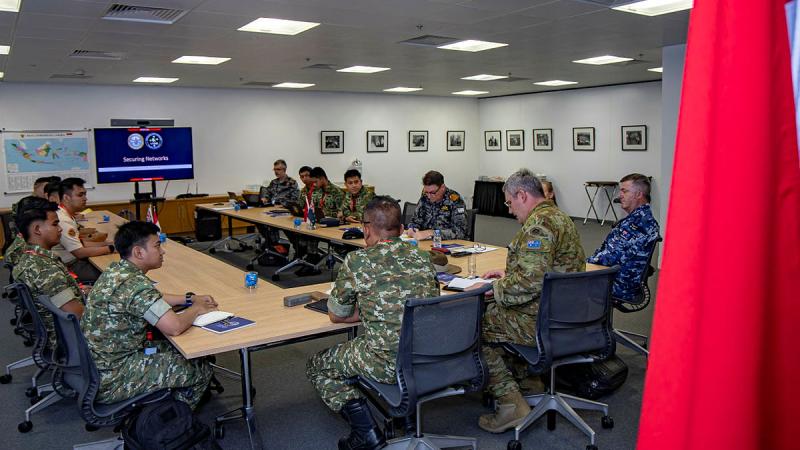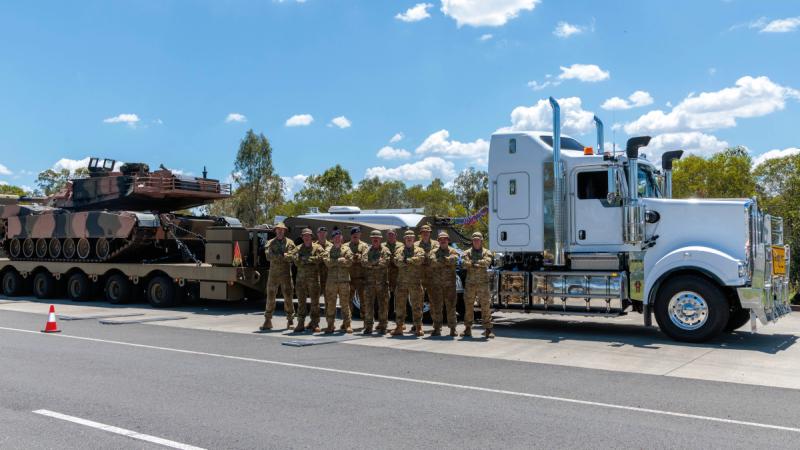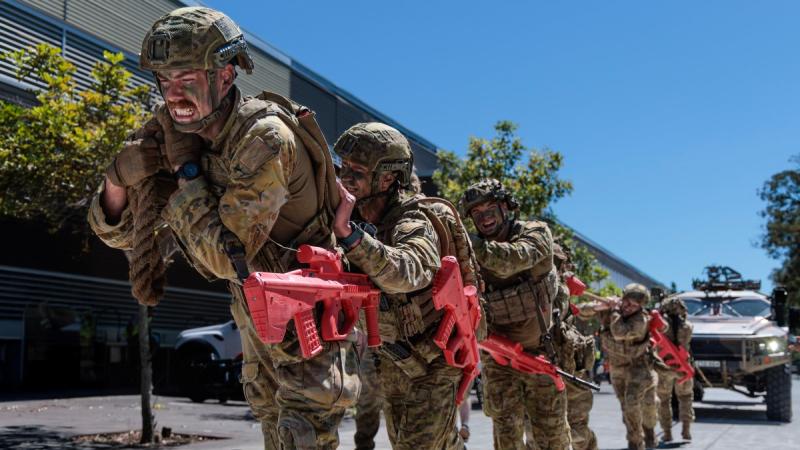12 July 2025
In the skies above Shoalwater Bay, a lone aerial vehicle glides over rugged terrain, camera payload trained on the scrub below.
The footage it captures is received by its operators in a Bushmaster Protected Mobility Vehicle (PMV) over 25 kilometres away.
Operators inspect the feed looking for any movement or shapes that indicate an unwanted presence.
In this case, no sign is a good sign, according to Captain Harry Gray, battery second-in-command of Task Element Dragon from 20th Regiment, Royal Australian Artillery.
“We are conducting trace clearances for a combined joint live fire exercise, and we will be observing the fall of shot for HIMARS when they fire,” he said.
“But after that it will be normal operations for us, conducting intelligence, surveillance and reconnaissance in support of the division, as well as target acquisition.”
The gunners are operating the Integrator tactical Uncrewed Aerial System (UAS) during Exercise Talisman Sabre 25, the second major exercise since the RQ-7B Shadow UAS was retired last year.
The new system provides numerous advantages, including a longer flight time, better camera payload and most importantly for the operators, a smaller footprint on the ground.
Being able to maintain a more mobile and tactical posture was a key advantage, according to Captain Gray.
“We can operate our ground control stations as laptops in a PMV, whereas with Shadow it was basically a large green box on the back of a truck,” he said.
“The skyhook recovery system also means we are not runway dependant; we just need an open area for it to glide into. The Shadow lands on its wheels, so we needed a graded surface.”
The system allows for a greater operation range, with operators launching the Integrator in a safe location before handing off control to a forward element closer to the area of operations.
“We push our controllers forward, extend our range and again, they're more survivable and mobile. Once that aircraft is running out of fuel, they hand it back to us, we recover it and we get them a new one,” Captain Gray said.
The drone is launched by a catapult and recovered using a skyhook, a line system that snares the wings of the craft, instead of touching down to land.
Getting the vehicles into the sky and accumulating flying hours is one of the best parts about being in the field, according to drone operator Gunner Ishaan McNeil.
Operators are more involved with Integrator from pre-flight to retrieval, a change from the Shadows which relied on aviation maintenance trades for some checks.
“In my role, I control the drone as well as take care of all the ground crew components such as wing assembly, fueling, defueling, launching and recovering the UAS,” Gunner McNeil said.
“The most rewarding thing about operating the Integrator is being able to work in a close-knit team, and support the mission and be successful in that task.”


